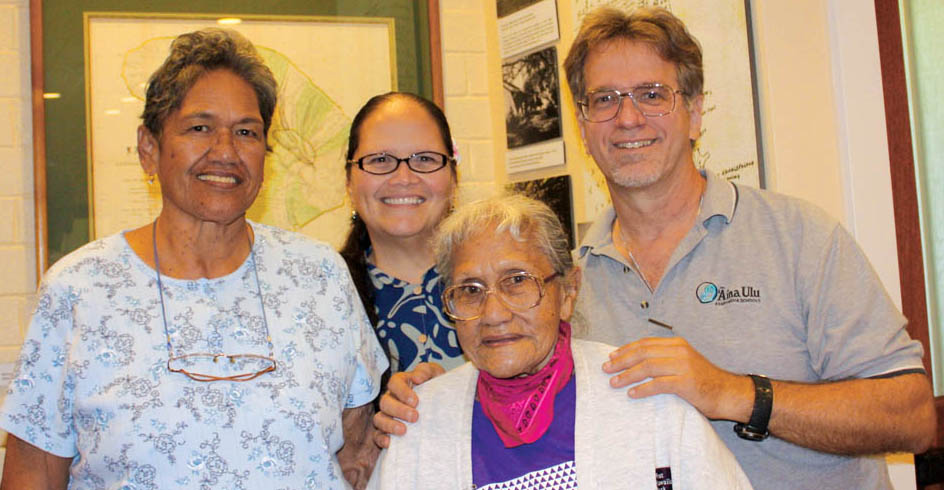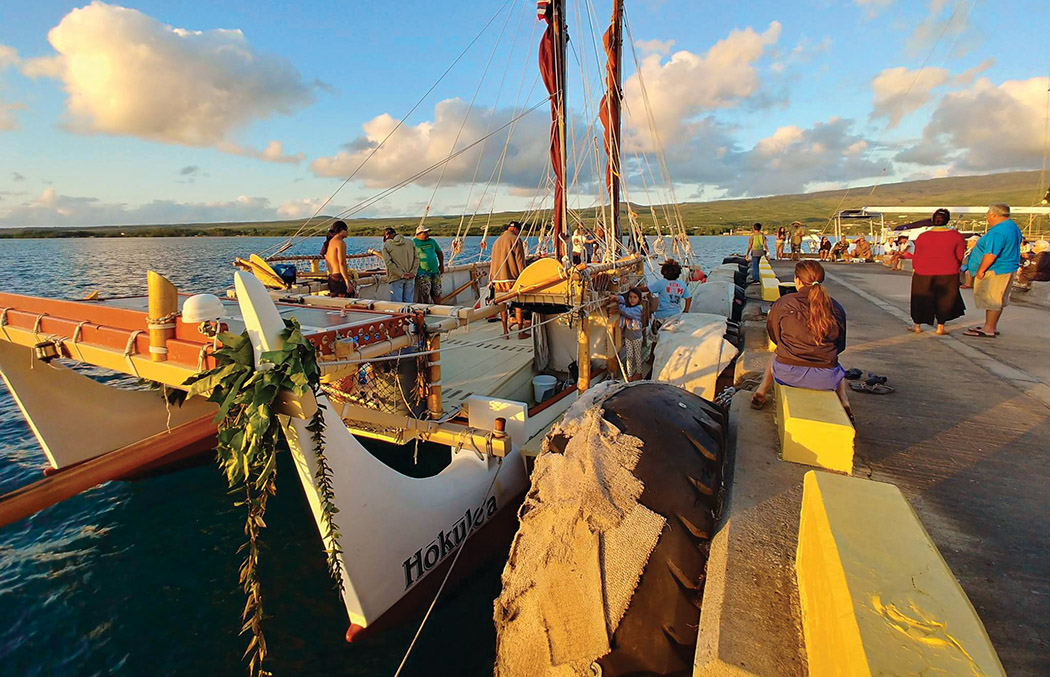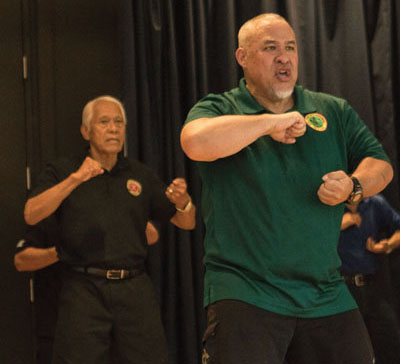Lessons in the Land: Connecting with the “Dryland Kine” Kūpuna
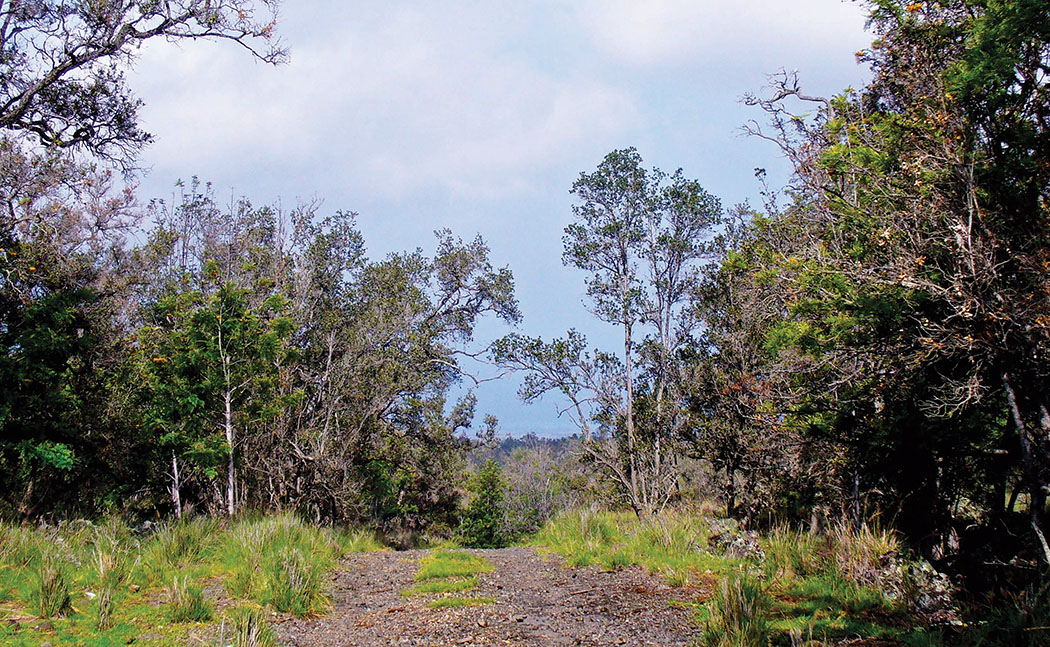
By Ku‘ulei Keakealani
The inspiration, or perhaps subtle dictation for this story came from a phone call that sounded a bit like this, “Bebe, daddy just saw what you wen write in dis magazine ova hea. Nice what you wen write!”
As the conversation continued, I was certainly uplifted and encouraged by the words of my father, a full-blooded Native Hawaiian kupuna (elder), who in his own unique way was telling me he was proud of what I had done.
As we neared the end of our conversation he asked if I was going to write again. I answered yes, but wasn’t too sure what I would write about this time. Surprised that he had an answer for me, I listened as he said, “Why you no write about the trees, you know the dryland kine trees of home Pu‘u Anahulu, Pu‘u Wa‘awa‘a, and Ka‘upulehu. That would be good, you no think so?”
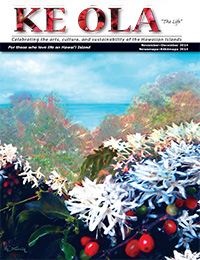
I knew at this point that a question I had posed to the ears of the universe had sent an answer via the words of my own father. So much to be thankful for, right?
How can I not? I asked myself. For one, to listen to the instruction given by an elder. And secondly, to write about my own homeland.
The kūpuna (ancestral) trees of this cultural landscape to which I belong surround me now as I write and embrace me in their comforting shade. Cool breeze blowing mauka, I close my eyes, and it seems that the scent of the ocean air is rising to the māulukua (upland forests).
Now, a thought to ponder, or rather, a perspective to consider: trees are our kūpuna. Is this a far-fetched viewpoint? Perhaps for some, but not for many.
If we look at one simple factor of what qualifies a kupuna, it is their age. They have progressed to a time in their lives where the gray of their hair is evident and the wear of their body is visible; maybe we’d say they’ve, “been there, done that.”
For most of the native trees we see, they are in fact older than most of us alive today, even older than those in our parents’ or grandparents’ generations. If by this simple factor we can acknowledge our native trees as our elder, it isn’t as far-fetched as initially thought.
La 12 o Malaki, he po‘akolu keia, March 12, Wednesday
When we are quiet, bird speaks
When bird is quiet, kanaka speaks
Wind blows, leaves speak
Rains fall, flowers kupu forth
Cool breezes blow, bodies soothed
Kupulau, spring, is upon us but, Lonoikamakahiki lingers
Akua moon will rise tonight, who will greet its face?
Positive vibe, good energies, love and light
Kanehoalani gives light
Evidence of makani seen out in the kai
White caps visible, wind eventually to come upon land
‘Ohemakai, she’s ‘Olapa’s cousin, her leaves too dance in the wind
Puzzling leaf-less ‘ohemakai, mai fret ‘oe, power saving mode
Vines creeping over fences, over stone walls, over stone walkways
‘ilima orange, halapepe yellow, ‘Elama red, Koali purple, ‘ili ‘e‘e white
Vibrant colors of the dryland forest, life blossoms seen
Maiapilo scent greets our entrance at the trail head, waft mai e ka Maiapilo
‘Iwi kūpuna lay on the forest floor building the foundation for new forest. Strong. Solid.
Ka ulu la‘au ‘o Ka‘upulehu; ola, life—ulu, growth.
Hearts open, joy, sadness, tears falls on sweet cheeks
Voices magnified, thanksgivings sung
Ola, life—ulu, growth!
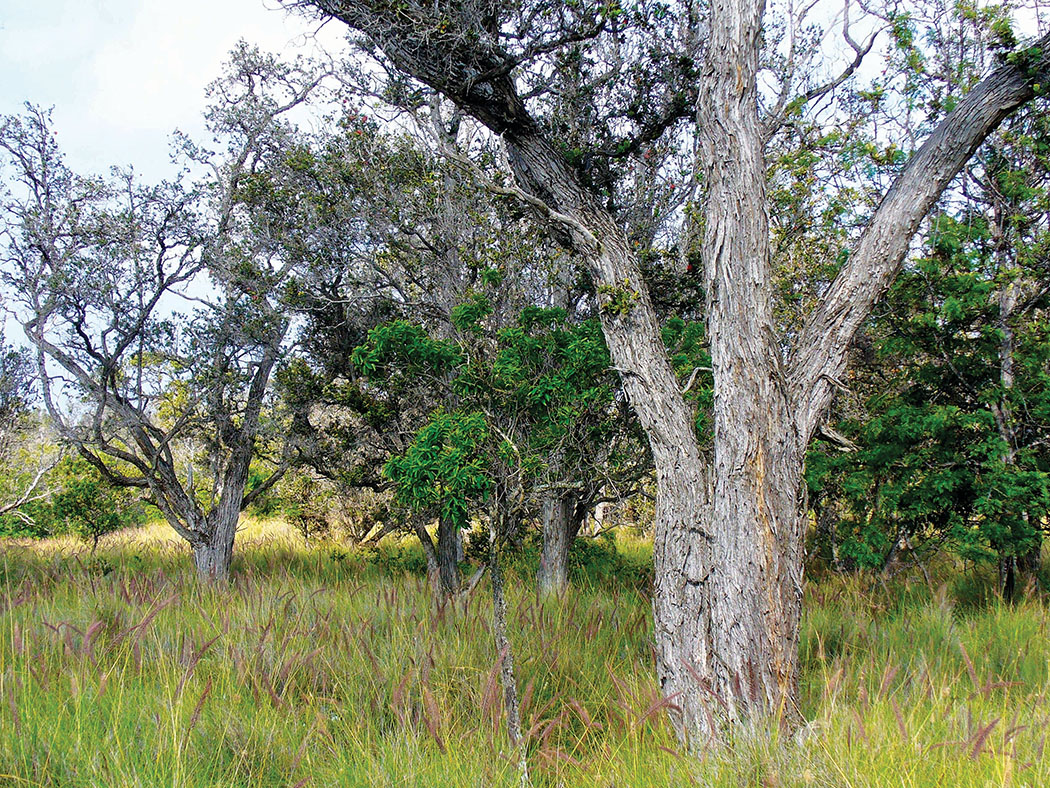
Just two days later
La 14 o Malaki, he po‘alima keia, March 14, Friday
Today I went to school, yes, stepped into the classroom. Not the four-walled building with the library down the walkway or the cafeteria we gather at to eat—nope.
The ceiling is the sky today, blue is its color with some cotton ball clouds scattered throughout. The floor is the weed-filled, rocky-ground evidence that Lonoikamakahiki has functioned well this season. Much rain has fallen, and the land is greened. The trees, to some extent, are the walls of my classroom. Vines are creeping upward, kissing and embracing the trunks of these kūpuna trees. Beautiful, is my classroom today.
Content? Hummm, what did I learn today?
Well, lessons began with me feeling alive and well as I turned my face to the sun to feel its warmth—I knew I was blessed to see another day.
I learned about movement—physics may be what they call it; I’m not sure. As the wind blew, and I saw the leaves move, some leaves moved and some did not. I had to ponder and observe, why are some moving while others aren’t?
I had a thought, maybe even a theory. My keen observation proved that thought wrong. Is that not science?
Evidence of felled trees gave me insight to what the people were doing. How they lived and interacted with their environment. Social Studies is the subject I believe that would be.
I know there was some integration of math…yes, it was when I measured by sight the size of many things in relation to my own body. This tree was more than 25-feet tall. How do I know? Well, I’m about 5’3” and this tree is certainly more than five of me—hummm, yep, that’s math!
I had some language arts and English in this. Spellcheck in my head: do I have the proper punctuation marks? How many paragraphs?
I even received some physical education as I walked the trail to my resting spot.
All in all, I’d say that after this day of being in the forest, I know I’ve learned much. The forest is one of the best teachers there are.
Optimal learning environment? Yes!
Interactive teacher? Yes!
Content rich? Yes!
Relevant? Yes!
Developmentally appropriate? Yes!
Any tests? Retention of day’s lessons? Met and exceeded!
What do I say to all of this?
Class dismissed!
The trees of this land are treasured natural features belonging to this landscape that continue to hold value and honor. My perspective as a native to the North Kona lands is that these trees are an important factor in the design of natural systems.
And as the human inhabitants on these lands for hundreds of years span multiple generations, our connections are deeply rooted in these systems. The shoreline areas of the North Kona ahupua‘a are scattered with beautiful beaches. For me they are the birth sands of my elders.
They further as places of rest for those who have passed on—this includes the upper regions as well. It is with great affection that I look to these lands as they have fed, raised, and sustained my people for uninterrupted successive generations upon generations. I end by honoring my homeland, sharing the opening line of the famous song, “Pu‘u Anahulu”:
“Nani wale Pu‘u Anahulu i ka ‘iu‘iu,
Beautiful indeed is Pu‘u Anahulu in the lofty distance…” ❖
Contact photographer Sarah R. Nichols: BigIslandGuru.com
Contact writer Ku‘ulei Keakealani: kuumehananani@yahoo.com
Glossary of Hawaiian terms and phrases
Akua—Name of the 14th night of the full moon.
Elama—All endemic kinds of ebony (Diospyros, synonym Maba), hardwood trees with small flowers and fruits.
Halapepe—Native trees (Dracaena [pleomele] spp.) in the lily family, with narrow leaves in tufts at branch ends and with clustered yellow fruits.
‘Ili ‘e‘e—Wild plumbago (Plumbago zeylanica), a shrub with white tubular flowers and thin oval leaves that were used medicinally.
‘Ilima—small to large native shrubs (all species of Sida, especially S. fallax), bearing yellow, orange, greenish, or dull-red flowers.
Iwi kupuna—pieces of dead trees, branches, stumps that remain where they have fallen on the landscape in the forest. Poetic reference to trees as kūpuna.
Kai—sea, seawater, area near the sea, seaside, lowlands, etc.
Kanaka—human-being, man, person, individual
Kanehoalani—Another name/reference to the sun.
Ka ulu la‘au o Ka‘upulehu—The forest of Ka‘upulehu
Koali—Some kinds of morning-glory (Ipomoea spp.)
Kupu—Sprout, growth
Kupulau—Spring season, Lit., leaf sprouting
Lonoikamakahiki—God of Makahiki season
Mai fret ‘oe!—Don’t [you] fret! (usage of Hawaiian and English words)
Maiapilo—A low, smooth shrub (Capparis sandwichiana) with vinelike branches, a member of the caper family, growing on some beaches and lava flows.
Makani—Wind, breeze.
‘Ohe makai—An endemic tall profile tree with smooth reddish or purple-brown bark and green leaves. Also known as ‘Ohe Kukuluae‘o, ‘Ohe kai, and ‘Ohe‘ohe.
Ola—Life, health, well-being, living, etc.
‘Olapa—Several native species and varieties of forest trees (Cheirodendron).
Ulu—To grow, increase, spread, etc.
Waft mai e ka Maiapilo—Come (wind-blown scent) of the Maiapilo.
Source: Hawaiian Dictionary, Pukui and Elbert; Ka‘upulehu Dryland Forest team
NOTE: Please visit DrylandForest.org to see beautiful pictures of the dryland forest trees and shrubs mentioned in this article, and so much more.
